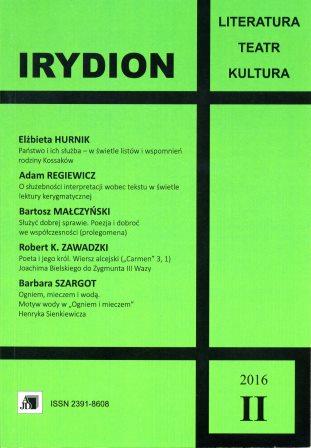Gotycka architektonika labiryntów w polskich powieściach grozy początku XIX w.
Gothic architectonics of labyrinths in the Polish horror novels at the beginning of 19th century
Author(s): Monika KusekSubject(s): Language and Literature Studies, Studies of Literature
Published by: Uniwersytet Jana Długosza w Częstochowie
Keywords: gothic novel; labyrinth; space horror; initation; transgression
Summary/Abstract: The appearance of labyrinths in European literature was common for centuries. Such confusing space, full of unexpected corridors, formed a part of the design of Gothic novels. In Krwawe znamię, Józef Ignacy Kraszewski novel, labyrinthine system of the castle is a pretext to create a mood of horror and mystery, while making the medieval aesthetics (eg. armour with a skull). The center of the space, however, is a portrait of a girl, which becomes a reference point for all the events described. In the novel Astolda of Anna Mostowska, the role of the labyrinth serves a garden, from which the knight Spera cannot find the exit. These corridors full of unknown experienced spaces are a kind of symbol of broaden knowledge or reached truth.
Journal: Irydion. Literatura – Teatr – Kultura
- Issue Year: II/2016
- Issue No: 1
- Page Range: 151-170
- Page Count: 20
- Language: Polish

